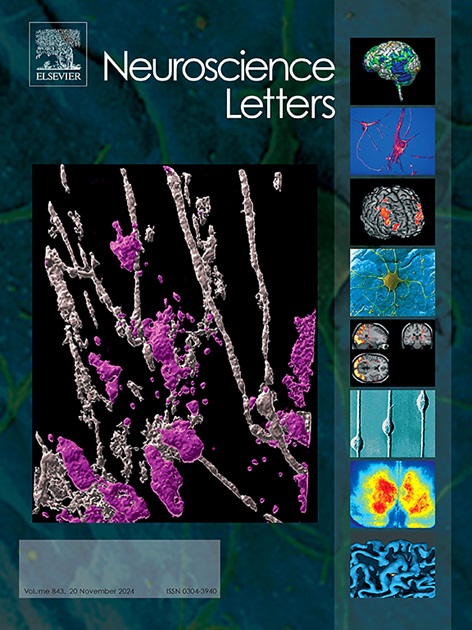Visual mismatch negativity to change of Japanese phonetic script type
IF 2.5
4区 医学
Q3 NEUROSCIENCES
引用次数: 0
Abstract
The Japanese writing system uses two phonetic scripts: hiragana and katakana. Hiragana is the most frequently used, whereas katakana is mainly used for foreign loanwords and onomatopoeias. This study examined whether differences between script types (i.e., hiragana and katakana) evoke VMMN. The ERPs were recorded for 44 participants. Hiragana and katakana were presented in the background of a visual cross-change detection task and alternately assigned as deviant (rare) and standard (frequent) scripts between blocks. In the results, P1 at the right electrode and N1 at the left electrode were significantly enhanced by hiragana rather than by katakana. In contrast, there were no significant differences between the deviant and standard conditions in P1 and N1. For both hiragana and katakana, the posterior negativity from 200 ms to 250 ms was significantly enhanced in the deviant condition compared to that in the standard condition, indicating VMMN for both scripts. These results suggested that the script-specific features of hiragana and katakana were processed before VMMN and the difference between hiragana and katakana evoked VMMN.
视觉错配对日语音标类型变化的消极性
日本的书写系统使用两种音标:平假名和片假名。平假名的使用频率最高,片假名主要用于外来词和拟声词。本研究考察了文字类型(即平假名和片假名)之间的差异是否会引起VMMN。记录了44名参与者的erp。平假名和片假名在视觉交叉变化检测任务的背景下呈现,并在块之间交替分配为异常(罕见)和标准(频繁)的脚本。结果显示,平假名显著增强右电极P1和左电极N1,片假名明显增强右电极P1和左电极N1。相比之下,P1和N1的偏差与标准条件无显著差异。对于平假名和片假名,偏差条件下200 ms至250 ms的后验负性较标准条件显著增强,说明两种脚本均存在VMMN。这些结果表明,平假名和片假名的脚本特异性特征在VMMN之前被加工,平假名和片假名的差异诱发了VMMN。
本文章由计算机程序翻译,如有差异,请以英文原文为准。
求助全文
约1分钟内获得全文
求助全文
来源期刊

Neuroscience Letters
医学-神经科学
CiteScore
5.20
自引率
0.00%
发文量
408
审稿时长
50 days
期刊介绍:
Neuroscience Letters is devoted to the rapid publication of short, high-quality papers of interest to the broad community of neuroscientists. Only papers which will make a significant addition to the literature in the field will be published. Papers in all areas of neuroscience - molecular, cellular, developmental, systems, behavioral and cognitive, as well as computational - will be considered for publication. Submission of laboratory investigations that shed light on disease mechanisms is encouraged. Special Issues, edited by Guest Editors to cover new and rapidly-moving areas, will include invited mini-reviews. Occasional mini-reviews in especially timely areas will be considered for publication, without invitation, outside of Special Issues; these un-solicited mini-reviews can be submitted without invitation but must be of very high quality. Clinical studies will also be published if they provide new information about organization or actions of the nervous system, or provide new insights into the neurobiology of disease. NSL does not publish case reports.
 求助内容:
求助内容: 应助结果提醒方式:
应助结果提醒方式:


